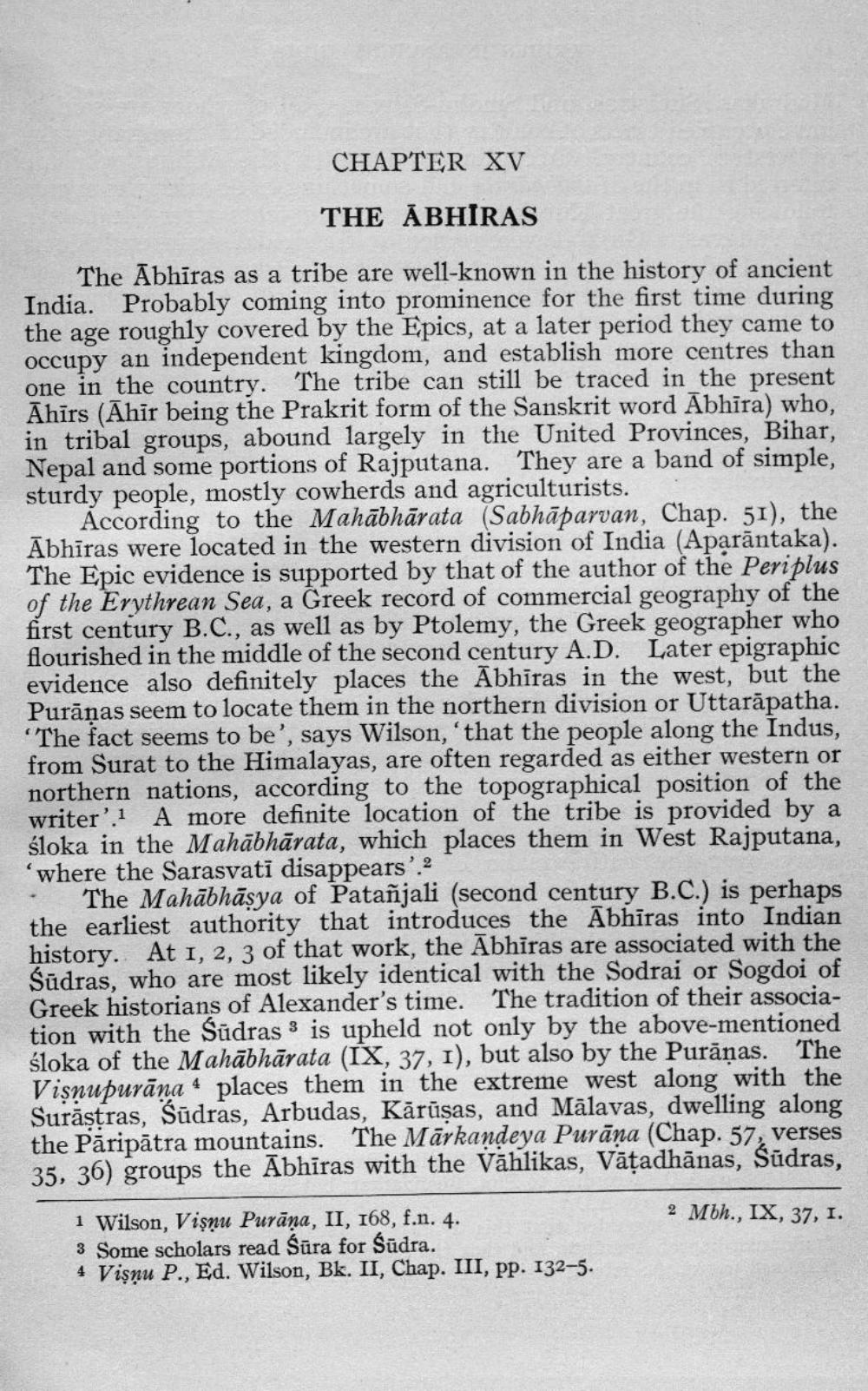________________
CHAPTER XV THE ABHIRAS
The Abhīras as a tribe are well-known in the history of ancient India. Probably coming into prominence for the first time during the age roughly covered by the Epics, at a later period they came to occupy an independent kingdom, and establish more centres than one in the country. The tribe can still be traced in the present Āhīrs (Ahir being the Prakrit form of the Sanskrit word Ābhīra) who, in tribal groups, abound largely in the United Provinces, Bihar, Nepal and some portions of Rajputana. They are a band of simple, sturdy people, mostly cowherds and agriculturists. .
According to the Mahābhārata (Sabhāparvan, Chap. 51), the Abhīras were located in the western division of India (Aparāntaka). The Epic evidence is supported by that of the author of the Periplus of the Erythrean Sea, a Greek record of commercial geography of the first century B.C., as well as by Ptolemy, the Greek geographer who flourished in the middle of the second century A.D. Later epigraphic evidence also definitely places the Ābhiras in the west, but the Purāņas seem to locate them in the northern division or Uttarāpatha.
The fact seems to be', says Wilson, that the people along the Indus, from Surat to the Himalayas, are often regarded as either western or northern nations, according to the topographical position of the writer'.1 A more definite location of the tribe is provided by a śloka in the Mahābhārata, which places them in West Rajputana, where the Sarasvati disappears' 2 • The Mahābhāsya of Patañjali (second century B.C.) is perhaps the earliest authority that introduces the Ābhīras into Indian history. At 1, 2, 3 of that work, the Abhiras are associated with the Sūdras, who are most likely identical with the Sodrai or Sogdoi of Greek historians of Alexander's time. The tradition of their association with the Sūdras 3 is upheld not only by the above-mentioned śloka of the Mahābhārata (IX, 37, 1), but also by the Purāņas. The Vişnupurāna 4 places them in the extreme west along with the Surāstras, Sūdras, Arbudas, Kārūsas, and Mālavas, dwelling along the Pāripātra mountains. The Mārkandeya Purāna (Chap. 57, verses 35, 36) groups the Abhiras with the Vāhlikas, Vātadhānas, Sūdras,
2 Mbh., IX, 37, I.
1 Wilson, Vişnu Purāņa, II, 168, f.n. 4. 3 Some scholars read Sūra for Sūdra. 4 Vişnu P., Ed. Wilson, Bk. II, Chap. III, pp. 132-5.




